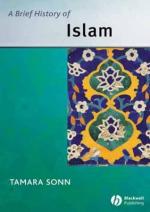|
This section contains 2,005 words (approx. 7 pages at 300 words per page) |

|
Ethos. Muslim art was influenced by preceding civilizations, but the overall ethos it derives from the Qur'an and from the teachings and the acts of the Prophet Muhammad is a unifying thread in the midst of Muslim diversity. In particular, the doctrine against figural representations of humans and animals has shaped the whole direction of Muslim art. Although this prohibition might seem restrictive to Westerners, from the viewpoint of Muslim artists, it has actually been liberating. Because of humans' fascination with representations of their own species, images of humans tend to dominate the art of cultures in which they are allowed, as evidenced by most ancient Near Eastern, Greek, Roman, Byzantine, Indian, and Western art. The exclusion of figures opens up other possibilities, which have been thoroughly elaborated in Muslim art. In Islam, the word of God replaces the human figure as...
|
This section contains 2,005 words (approx. 7 pages at 300 words per page) |

|




